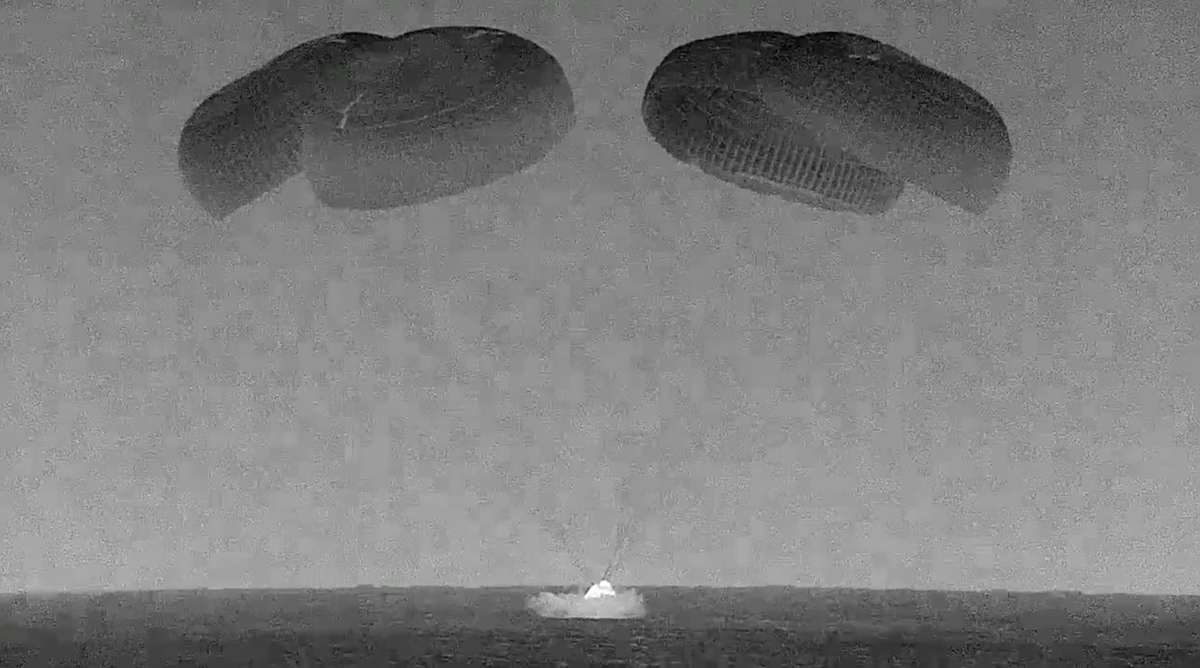PARIS — A Crew Dragon spacecraft splashed down in the Gulf of Mexico early Sept. 15, concluding a five-day private astronaut mission that featured the first commercial spacewalk.
The Crew Dragon capsule Resilience splashed down near Dry Tortugas, in the Gulf of Mexico west of Key West, Florida, at 3:37 a.m. Eastern. The splashdown location was a new one for SpaceX, which said it selected it after poor weather conditions at other locations off the Gulf and Atlantic coasts of Florida delayed the launch by nearly two weeks.
The splashdown marked the end of the five-day Polaris Dawn mission, the fifth private astronaut mission flown by SpaceX. “Polaris Dawn, we are mission complete,” Jared Isaacman, commander of the mission, said moments after splashdown.
The Polaris Dawn mission was commanded by Isaacman, the billionaire founder and funder of the Polaris program who also led the Inspiration4 private astronaut mission launched on another Crew Dragon three years ago. Kidd Poteet, a former Air Force pilot, was the mission’s pilot. Two SpaceX engineers, Sarah Gillis and Anna Menon, were mission specialists.
A Falcon 9 launched the Crew Dragon spacecraft into an elliptical orbit Sept. 10, initially placing it into an orbit of about 190 by 1,200 kilometers. Dragon raised its orbit later in the first day of the mission, reaching an apogee of 1,408.1 kilometers, according to SpaceX. That marked the highest altitude on a crewed Earth orbital mission and the highest altitude by any crewed mission since the Apollo 17 mission to the moon in 1972. Dragon lowered its apogee to about 720 kilometers after about six orbits.
The highlight of the mission was the first commercial spacewalk, which took place on Sept. 12. All four crewmembers wore SpaceX-designed extravehicular activity (EVA) suits as the cabin was depressurized. Isaacman and Gillis briefly exited the hatch in the nose of the Dragon spacecraft in a “standup” spacewalk, testing the performance of the suits.
After the spacewalk the crew devoted their time to nearly 40 experiments, focusing on the effects of the space environment on the human body and tests of equipment that could be used to collect such data.
The mission also tested communications with the ground through SpaceX’s Starlink broadband constellation, using laser intersatellite links. Those tests included a broadcast of Gillis playing the violin while in orbit as well as a live downlink with SpaceX employees. Neither Polaris nor SpaceX provided many technical details about those Starlink tests, although SpaceX said the discussion with employees lasted for more than 40 minutes and was uninterrupted even as Dragon’s Draco thrusters performed 16 burns.
The cover page of an April 2023 presentation showing how a SpaceX Crew Dragon spacecraft could reboost Hubble as part of the Polaris program. Nearly all the contents of the presentation itself, released under a FOIA request, were redacted. Credit: NASA/SpaceXFuture of PolarisPolaris Dawn was billed as the first of a series of three mission in the overall Polaris program led and funded by Isaacman. The final mission, he said, would be the first crewed launch of SpaceX’s Starship vehicle.
What the second mission will be is uncertain. At an Aug. 19 briefing to preview Polaris Dawn, Isaacman said only that the second mission would build upon Polaris Dawn. “We’re going to learn an awful lot from Polaris Dawn. It has big, very ambitious objectives. We’ll come back with a lot of data, and that’s what will ultimately inform the second mission.”
For a time, SpaceX and Polaris were studying a mission to the Hubble Space Telescope to reboost and potentially service it. However, in June NASA announced it was not pursuing any private servicing options for Hubble out of concerns such a mission might damage Hubble.
NASA has not disclosed details about the study that led to that conclusion. Presentations about the study, released after a Freedom of Information Act request by SpaceNews, were almost entirely redacted, citing exemptions that protect commercial proprietary information and the “deliberative process privilege.” The only information that was not redacted was general information about Hubble itself.
The presentations did include an illustration demonstrating how the mission could work, with the Dragon’s trunk section attached to the base of Hubble. Thrusters in the nose of Dragon were firing, presumably to raise its orbit.
